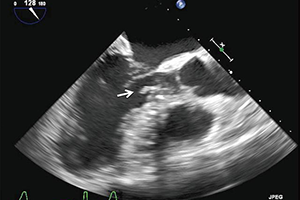Septal myectomy after failed septal alcohol ablation
Abstract
Despite septal myectomy remaining the gold standard septal reduction therapy for hypertrophic obstructive cardiomyopathy (HOCM), there has been a disproportionate use of alcohol septal ablation (ASA) worldwide. Absolute resolution of left ventricular outflow tract (LVOT) obstruction with ASA is not achieved in a substantial proportion of patients. The mechanisms of failure from ASA are partially understood and described. Residual obstruction in hypertrophic cardiomyopathy is associated with worse clinical outcomes and mortality. There is a growing number of patients who present with significant residual gradients after ASA and require a rescue septal myectomy operation, which then carries an increased risk of perioperative complications and life-long sequelae. This contrasts with the excellent outcomes achieved by septal myectomy without previous percutaneous intervention. Despite complete resolution of obstruction in rescue myectomy, the outcomes remain compromised by the prior ASA.
Cover






